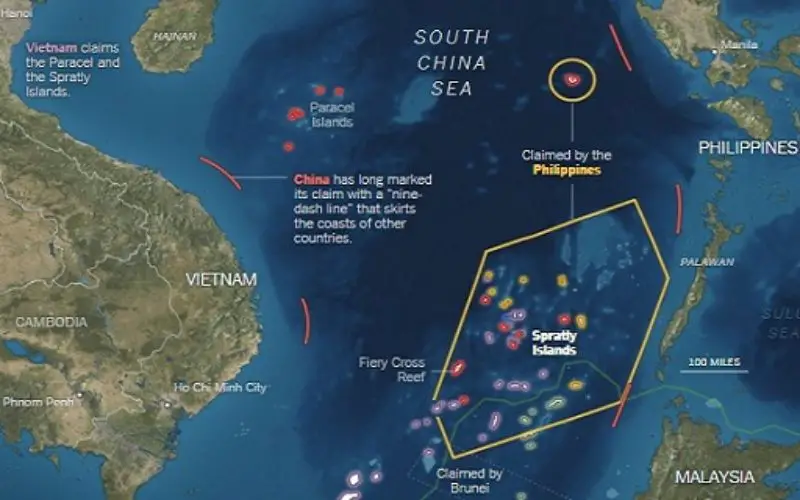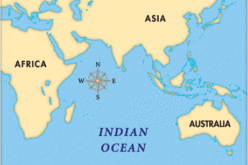Contributed By:

The Spratly Islands are a group of more than 750 reefs, islets, atolls, cays and islands in the South China Sea. The history of territorial claim on these islands is long disputed between Philippines, Malaysia, Vietnam, Taiwan and Brunei.
Countries from around the world have insisted that China’s expansion into the South China Sea is illegal. It is building a huge artificial island in the Spratly Island chain, one of the most contested areas in the world.
China claims to have discovered the islands in the Han dynasty in 2 BC. The islands were claimed to have been marked on maps compiled during the time of Eastern Han dynasty and Eastern Wu. Since the Yuan dynasty in the 12th century, several islands that may be the Spratly have been labeled as Chinese territory [Refer attached: Map of the South China Sea Islands, by Ministry of the Interior, Republic Of China, 1947].
The islands have great strategic and economic importance. China expansion of territorial claim in the South China Sea is driven by strategic as well as economic benefits.
Strategic Importance:
These islands are spread deep in the South China Sea more than 500 miles from China’s mainland; hence, the territorial claim on the island is important to have a strategic dominant presence as a strong military power in the region. China’s land reclamation at Ferry Cross Reef, Mischief Reef, and Subi Reef will add deterrence to other nations. Military setups such as radar facilities and airstrip add an extra tooth to the Chinese military and will enhance sustained Chinese air and sea patrols of the area.
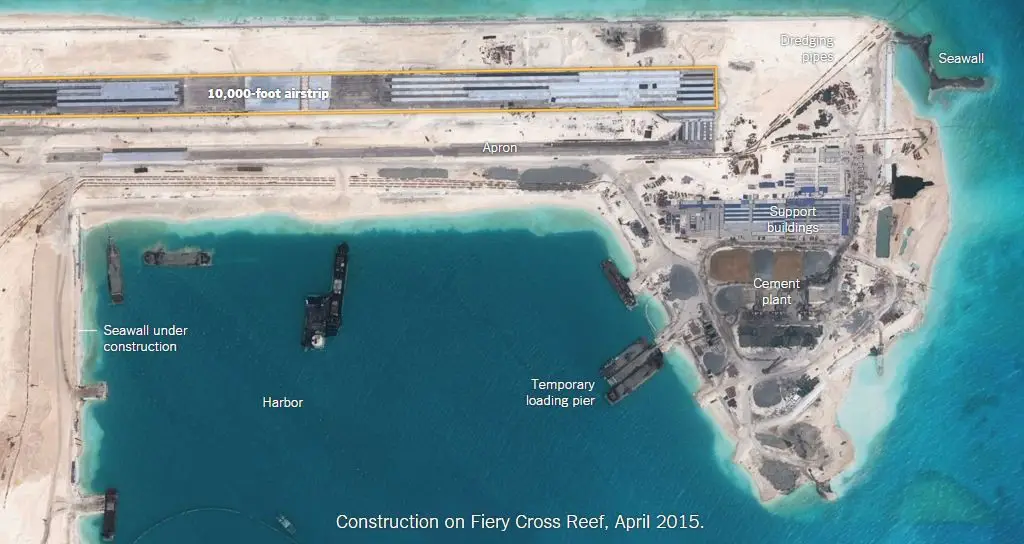
Construction on Fiery Cross Reef, April 2015.
Credit: The Tribune
The military infrastructure will boost the presence and striking capability of Chinese Air Force, Navy, and Army. Hence, land reclamation adds a front line to geographical security buffer to the Chinese mainland.
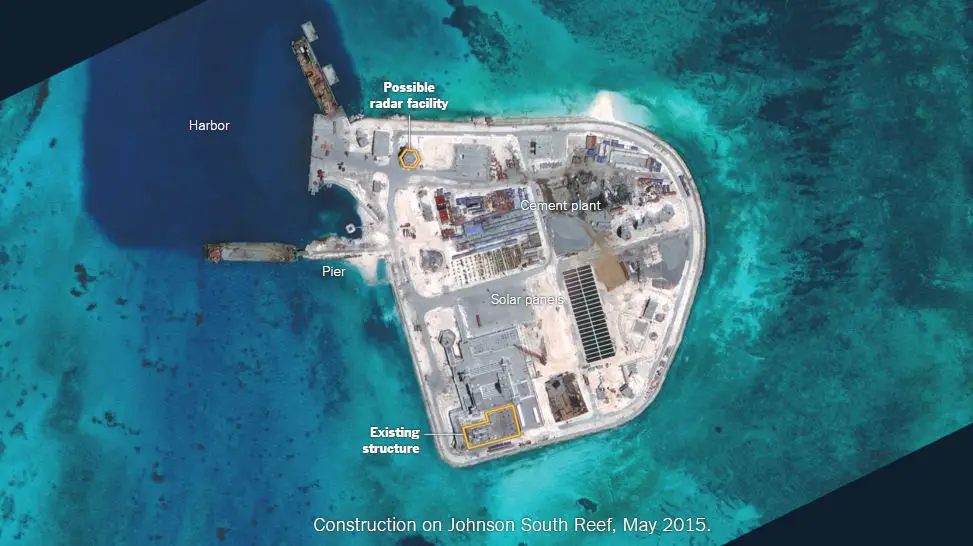
Construction on Johnson South Reef, May 2015.
Credit: The Tribune
Economic Importance:
Oil and Gas
The Spratly islands hold potential and significant large reserves of hydrocarbons (oil and natural gas). According to a report by The Geology and Mineral Resources Ministry of the People’s Republic of China (PRC) has estimated that the Spratly area holds oil and natural gas reserves of 17.7 billion tons, which make it world fourth largest oil and gas reserve. This could make Chinese economy more independent from oil imports from other countries.
China can’t afford the loss of territorial claim of the islands, as the Philippines started to take their territorial claims more seriously and stationed troops on islands.
Shipping Route
The 21st century is a marine time trade centenary. World’s most of the trade happens through the sea routes. The South China Sea is one the busiest sea route of commercial shipping and surrounding countries would get an extended continental shelf if their claims were recognized. The tanker traffic through the South China Sea is a great source of earning for the Chinese economy. Keeping this in notice Chinese claim on Spratly islands gives them added significance as positions from which to monitor maritime activity in the South China Sea and to potentially base and project military force from.
Fishing Market
The region is one of the world’s most productive areas for commercial fishing. In 1988, for example, the South China Sea accounted for 8% of the total world catch, a figure which rose to 35% in 2010 [World review of fisheries and aquaculture ].
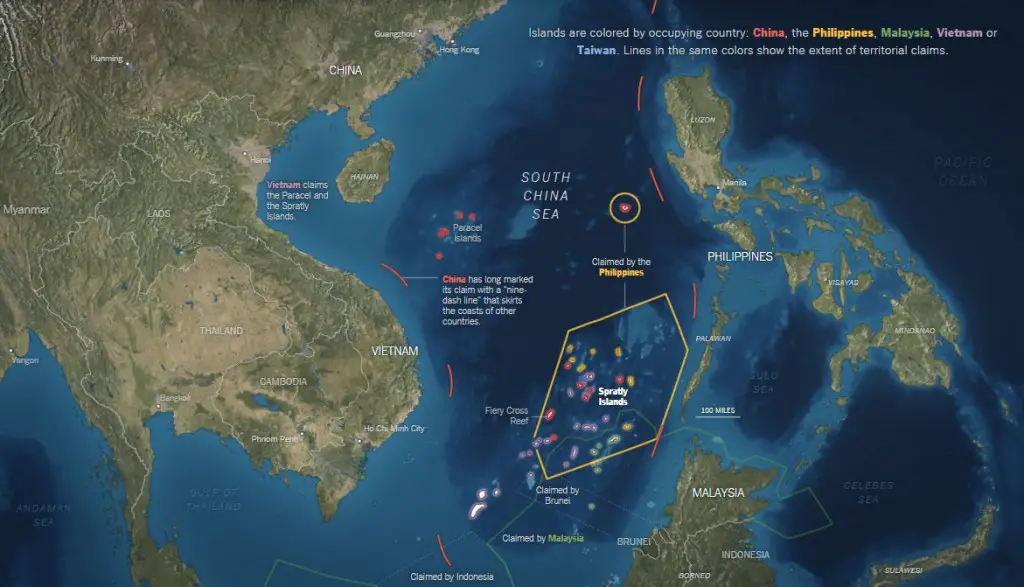
Credit: The Tribune
Four Possible Hypothesis:
Hypothesis 1: The nation’s strategic intent is the expansion of control of oil and gas areas.
Hypothesis 2: The nation’s strategic intent is the control of lanes of shipping. The South China Sea is one of the busiest commercial sea routes. Control on sea route could add extra revenue to the Chinese government in terms of the tariff of ships.
Hypothesis 3: The nation’s strategic intent is the control of fishing rights and the region is full of biodiversity and have been a popular fishing zone.
Hypotheses 4: China’s Strategic Intent is to make a strong military presence and to control over hydrocarbons, sea routes and fishing industry.
The territorial claim will add act as a geographical buffer zone to China mainland security policy and will also help China to have a control over the sea trade route, fishing, oil and gas resources. It is clear from the satellite imagery as well as other reports that China is not claiming on the Spratly Islands, but the Philippines, Vietnam, and Taiwan has already made their military presence other islands.
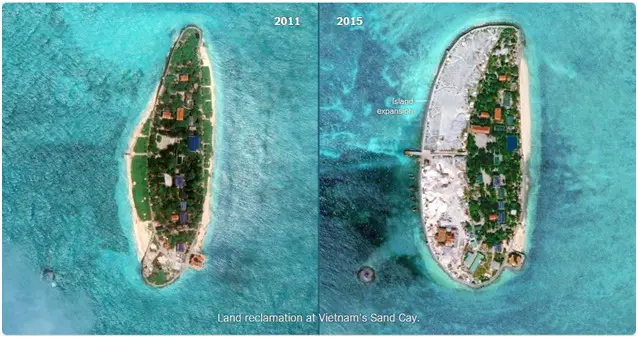
Land reclamation of Vietnam on Sand Cay Island
Vietnam has made land reclamation on Sand Cay Island and has expanded the island geographical area. China is expanding its presence at a very fast pace and has built three airstrips in a very short span of time.
**The study was carried out as an assignment by Saurabh Singh [M.Tech. in Geomatics] in a course by The Pennsylvania State University through Coursera


